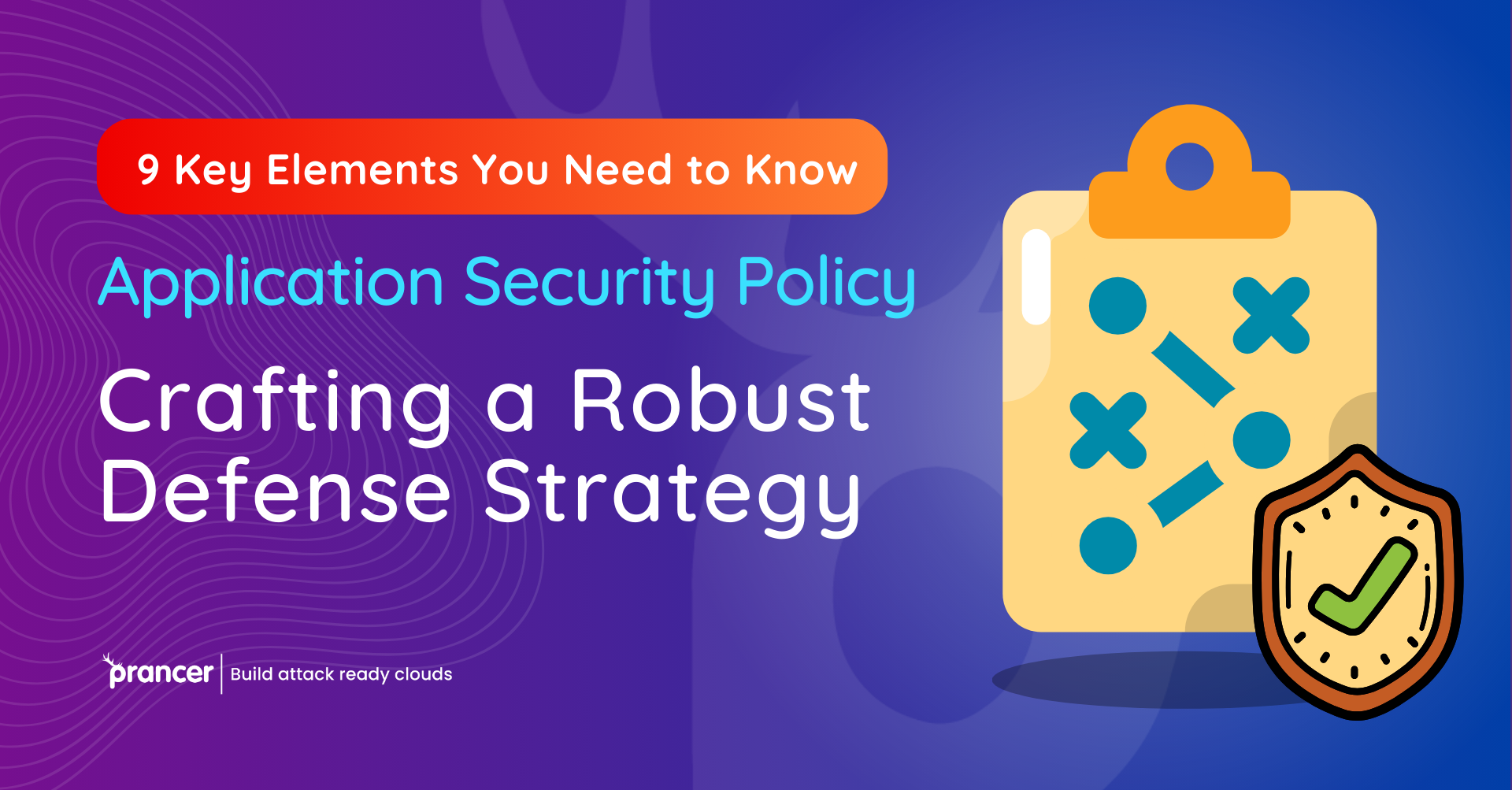

Cyber threats are becoming more complex and popular hence the need for organizations to improve on the way they defend their digital capital. This implies having an application security policy that is structured in an orderly manner. We’re ready to review the fundamentals of building a reliable attack policy, comprising the nine most critical requirements to an appropriate security app control.
Today, cyber threats are becoming more sophisticated and frequent hence the need for increased security measures to defend organizations from any malicious attacks on their digital holdings. Developing an efficient application security policy is one major aspect of implementing this approach. Our overall analysis will touch on the basics of building a robust attack process, which are the nine foundations of efficient protection application governance. The focus of this discussion will center on automated penetration testing and its ability to bolster the aforementioned strategies in advance through the identification and resolution of potential flaws.
To begin with, we should discuss the roadmap. Security roadmap can be thought about as your GPS for navigating through the world full of different cyber dangers. Your defense strategy, detailing how you are going to protect your apps from this risk. This is not some plan of directions, but an alignment of security aims into business objectives.
Solid application security strategy are built with well articulated policies, procedures, and practices. These strategies are very important in the digital world where threats change fast to protect your company applications. Security standards specify how they apply and maintain in games.
Prancer provides this role for the penetration testing solutions on your application security policy and therefore is essential. They have many types of tools that enable you easily spot risks and fit them into your application security policy plan so as to prevent risks proactively.
A comprehensive application security policy must include automated penetration testing as its foundation. it allows you to identify the vulnerabilities and possible attack routes automatically. Employing Prancer’s solutions enables you to remain one step ahead of cyber risks and significantly lower incidents of breaches.
In the current cyber environment, where threats are changing rapidly, it is important to formulate a comprehensive application security policy for protecting digital assets. This policy should involve a systematic approach in which the nine fundamental aspects of successful app security management are implemented. An essential part of this framework is automated penetration testing, especially the use of Prancer’s leading tools that can proactively determine and mitigate potential security gaps. Prancer’s solutions must be integrated into an all-encompassing strategy if you want to stay ahead of cyber threats and reduce the risk of breaches.
Navigating the Cybersecurity Landscape: The complete reference for the Automated Penetration Testing and also for Application Security.
As the cyber world constantly evolves at a great speed, it is very essential to develop an adequate response when organizations face threats so many frequent and complicated. This entails the creation of a very strong application security policy. This detailed analysis considers the main elements of secure application security governance with regard to a strong attack policy consisting of nine basic components. The subject of our discussion is automated penetration testing, being one among the key tools which enable anticipatory detection and resolution for potential flaws.
The Application Security Roadmap
Your security roadmap is like the compass that directs you on through the cyber threat’s landscape. It is a very effective strategy for protecting your applications that links the security goals to business objectives. This blueprint is alot more than just a map; it’s an integrated plan that comprises numerous security measures, acting as one line of defense.
Building an Effective Application Security Strategy
Policies, procedures and practices are all very crucial components of an effective application security plan. These measures play a huge role in the protection of our apps today, where threats keep changing at an extremely high speed. In fact, they should list the standards and their use as well as maintenance in operational ground.
Critical components of an effective defense strategy
Risk Assessment: Next, carry out a comprehensive risk analysis. Find the potential vulnerabilities, measure their impact and then rank them in order. This provides the basis of your strategic security planning.
Policy Development: Create a comprehensive application security policy. This document should describe the implementation steps as well as outline in detail how to comply with it.
Security Testing with Automated Penetration Testing: Automated penetration testing tools like Prancer’s are highly necessary for security testing to find and address any discovered vulnerabilities.
Secure Coding Practices: Train all your developers on the secure coding methods. Implement security libraries and tools to protect from the common attacks such as SQL injection or also cross-site scripting.
Incident Response Plan: A good incident response policy should be established. If there is a breach, it is paramount that everyone understands their own functions and responsibilities
Continuous Monitoring: Perform the ongoing monitoring of your applications to find any abnormalities, vulnerabilities or any security threats in order to fix problems immediately.
Vendor Security: In case of outsourcing, ensure that you have the highest security measures in terms of your partners. These should align with your overall application security policy.
User Training and Awareness: Instruct both the end-users and staff in security basics. But highlight the vigilance because human error is one one of the top security issues.
Regular Updates and Patch Management: Stay up to date with the latest security patches. Some vulnerabilities can be easily eliminated through the software updates on a regular basis.
Contribution of Prancer in improving the security application is noteworthy.
Prancer has a very crucial part to play in making the application security policies much stronger with their penetration testing solutions. Their toolset integrates with your security solution to aid in the identification and control of any risks before they materialize.
Automated Penetration Testing: The Cornerstone of Application Security
Among the components of an efficient application security policy is automated penetration testing. It regularly determines the vulnerabilities and attack vectors. By implementing Prancer’s innovative offerings, you are a step ahead of the cyber threats that significantly minimizes your own risk to breach.
The need for an integrated application security policy that controls the risks in digital fields is highly crucial today. This policy should involve the nine fundamental aspects of a successful application security management system. Among the critical components of this framework is the role played by automated penetration testing, a very vital process that makes use of Prancer’s advanced tools. Such tools aid in locating and addressing the security gaps. Adopting Prancers’s solutions as a part of the total strategy is very key to surpassing in terms of cyber security and consequently avoiding any incidences that would lead to a breach.
Due to the increased sophistication as well as the complexity of cyber attacks, organizations require a comprehensive application security policy. A policy like this must rely on automated penetration tests that prevent the risks and vulnerabilities before they happen, for example with Prancer’s tools. These nine cornerstones should be incorporated in the cyber strategy to defend against various threats across the digitized environment. By implementing automated penetration testing, you will be able to reinforce not only the defenses but also their dynamic character that responds quickly as the features of cyber threats change.
Conclusion
The most crucial step in the protection against cyber threats, or world full of cyber threats and hazards, starts here, or begins with a strong application security policy. These nine crucial components combined with services such as Prancer’s Automated Penetration Testing will go a long way in protecting your applications and digital assets from new emerging menace. A good plan should entail comprehensive strategy, educating your staff and remaining alert.
